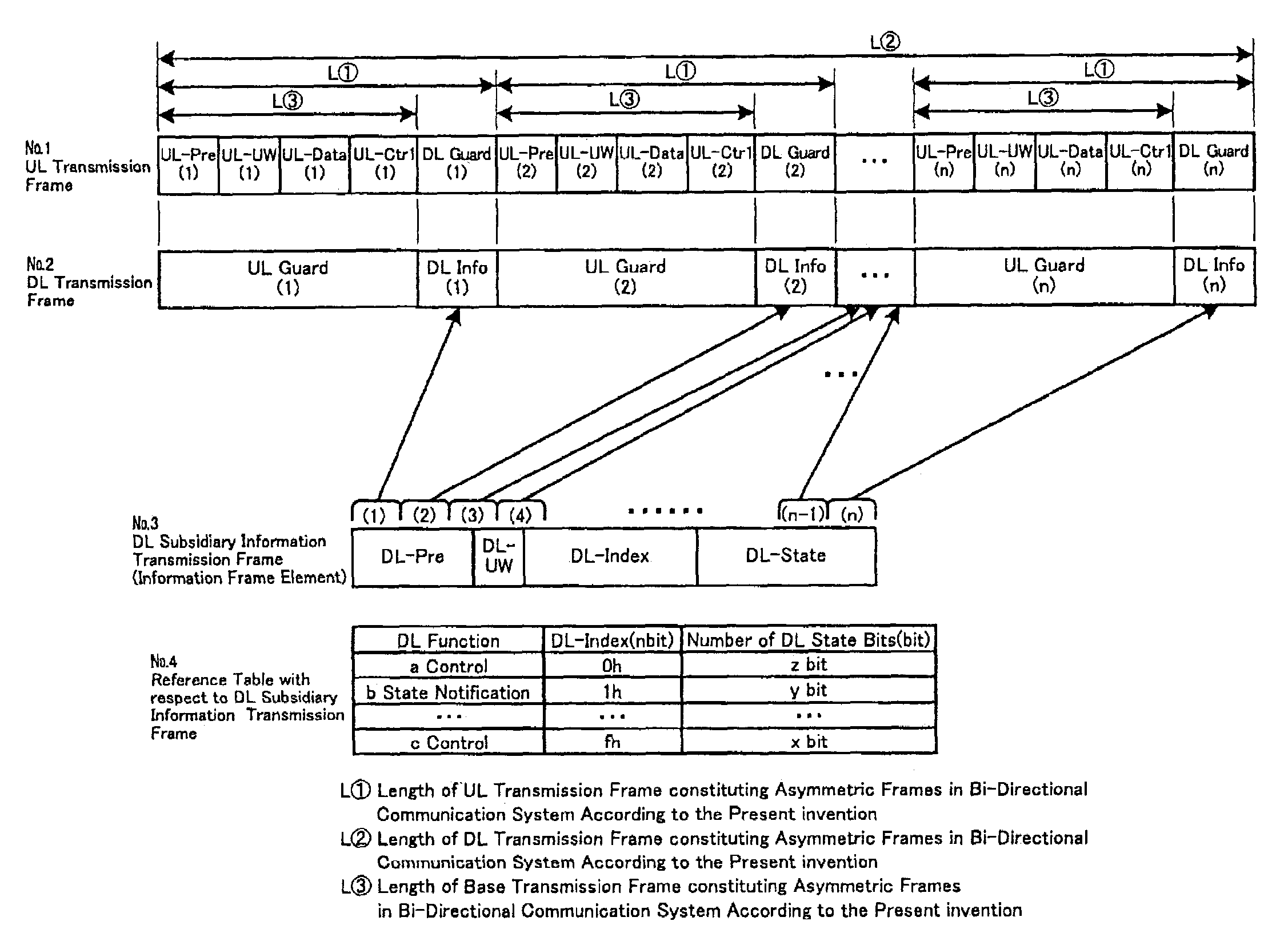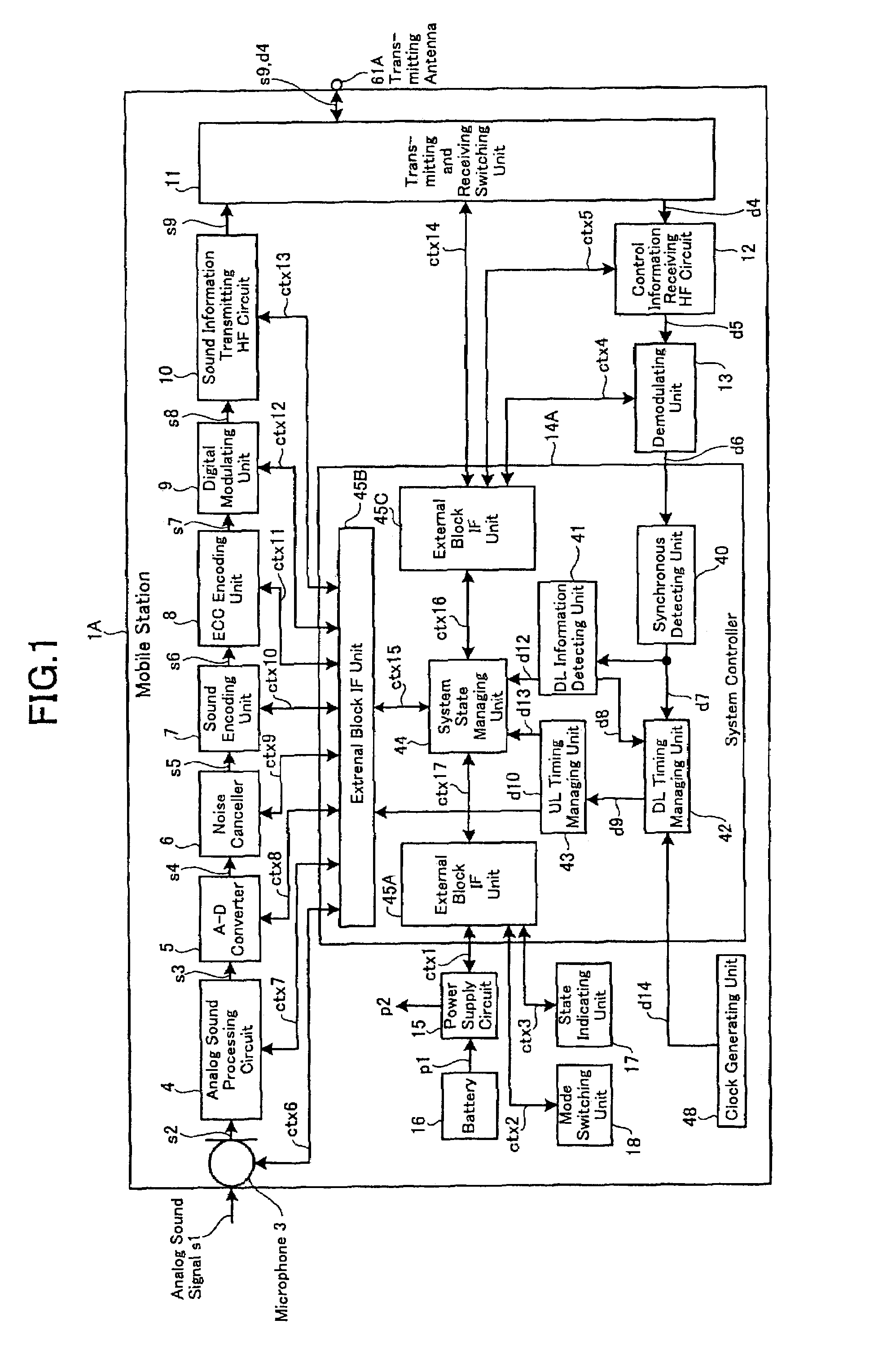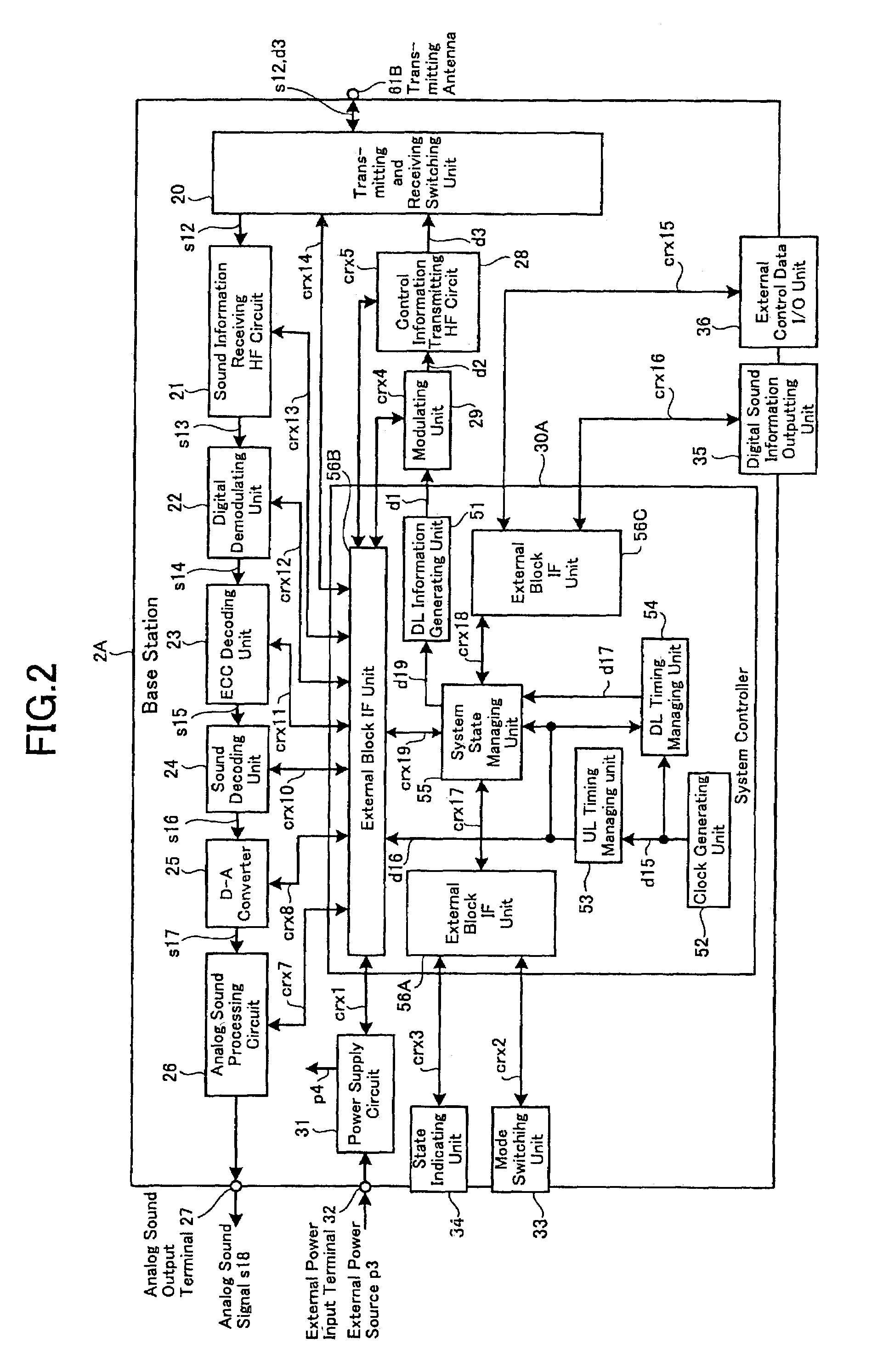Bidirectional digital wireless system transmitting and receiving asymmetric frames
a digital wireless and transmission frame technology, applied in data switching networks, power management, synchronisation signal speed/phase control, etc., can solve the problems of conventional bidirectional digital wireless system degraded frequency utilization efficiency, etc., to achieve reliable and efficient transmission of downlink information and enhance frequency utilization efficiency
- Summary
- Abstract
- Description
- Claims
- Application Information
AI Technical Summary
Benefits of technology
Problems solved by technology
Method used
Image
Examples
first embodiment
[0061]The mobile station 1A constituting the bidirectional digital wireless system according to the present invention is shown in FIG. 1 as comprising a microphone 3, an analog sound signal processing circuit 4, an A-D converter 5, a noise canceller 6, a sound encoding unit 7, an ECC encoding unit 8, a digital modulating unit 9, a sound information transmitting high frequency circuit 10, hereinlater referred to as “a sound information transmitting HF circuit 10”, a radio frequency transmitting and receiving switching unit 11, hereinlater simply referred to as “RF transmitting and receiving switching unit 11”, a transmitting antenna 61A, a control information receiving high frequency circuit 12, hereinlater simply referred to as a control information receiving HF circuit 12”, a demodulating unit 13, a system controller 14A, a power supply circuit 15, a battery 16, a state indicating unit 17, and a mode switching unit 18.
[0062]The microphone 3 is adapted to collect an analog sound sig...
second embodiment
[0106]In the bidirectional digital wireless system according to the present invention, the information frame element carrying the subsidiary information segment includes an index frame element DL-Index indicative of a category of the subsidiary information segment and a state frame element DL-State indicative of a state of the subsidiary information segment, the base station 2B is operative to generate and transmit a plurality of downlink transmission frames L2 each including an information frame element including an index frame element DL-Index and a state frame element DL-State with reference to the reference table stored in the DL-index reference table 57, whereby the mobile station 1B is operative to receive the downlink transmission frames L2 in the publicly-known time division multiplexing manner so as to sequentially extract the information frame portions DL Info (1) to DL Info (n) collectively forming the information frame element, detect the index frame element DL-Index, id...
third embodiment
[0123]In the bidirectional digital wireless system according the present invention, the base station 2C is operative to generate and transmit a plurality of downlink transmission frames L2 each including the information frame portions DL Info (1) to DL Info (n) each of which contains the pilot frame element TPC Pilot to the mobile station 1C with reference to the uplink transmission frames L1, and the mobile station 1C is operative to receive the downlink transmission frames L2 each including the information frame portions DL Info (1) to DL Info (n) each of which contains the pilot frame element TPC Pilot carrying the transmit power control information and the frame synchronization information from the base station 2C in a time division multiplexing manner so as to sequentially extract the pilot frame element TPC Pilot, and perform a transmit power control function and a frame synchronization function in accordance with each of the pilot frame elements TPC Pilot (1) to TPC (n) to en...
PUM
 Login to View More
Login to View More Abstract
Description
Claims
Application Information
 Login to View More
Login to View More - R&D
- Intellectual Property
- Life Sciences
- Materials
- Tech Scout
- Unparalleled Data Quality
- Higher Quality Content
- 60% Fewer Hallucinations
Browse by: Latest US Patents, China's latest patents, Technical Efficacy Thesaurus, Application Domain, Technology Topic, Popular Technical Reports.
© 2025 PatSnap. All rights reserved.Legal|Privacy policy|Modern Slavery Act Transparency Statement|Sitemap|About US| Contact US: help@patsnap.com



